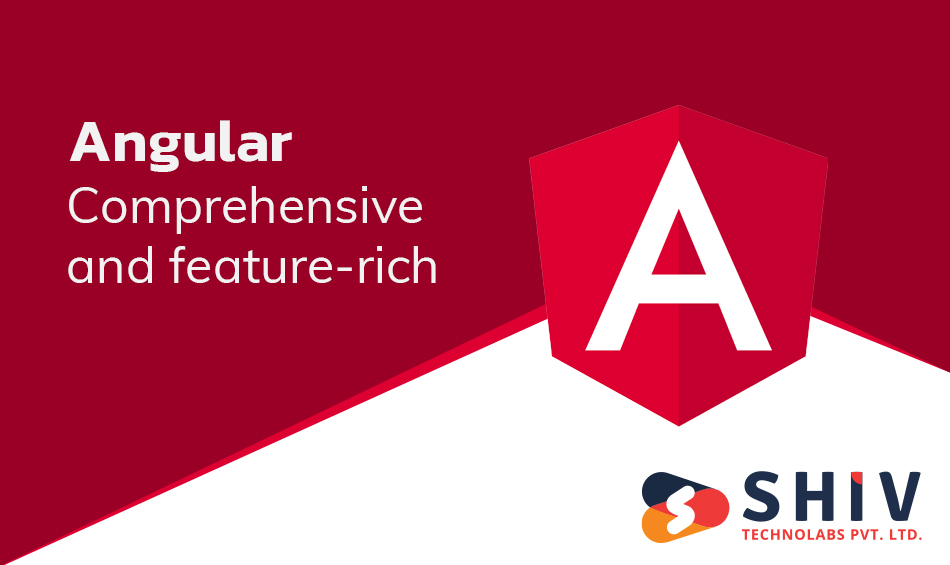JavaScript frameworks have become the core necessity for developing powerful, flexible, and scalable applications. Among these frameworks, A...
JavaScript frameworks have become the core necessity for developing powerful, flexible, and scalable applications. Among these frameworks, Angular, React, and Vue are most widely used.
Each framework has its own set of exclusive features and benefits, and the choice between them, therefore, becomes a matter of priority for a project to be successful. This blog will provide a detailed comparison of these frameworks, highlighting the pros and cons to facilitate your decision making process.
Angular: Comprehensive and feature-rich
Key features:
- Two-way data binding: Angular’s bidirectional data binding feature synchronizes the model and the view. When the data in the model is changed, the view reflects this change and, likewise, when the view is changed, the data in the model is adjusted accordingly.
- TypeScript-based: Angular is written in TypeScript, which allows developers to leverage the advantages of the static typing and object-oriented features for improved coding and debugging.
- Dependency injection: Angular’s dependency injection subsystem is a standout feature that improves the way components get hold of their dependencies.
Pros:
- Strong backing by Google ensures regular updates and a large community.
- Highly comprehensive, suitable for developing large-scale applications.
- Excellent integration with other tools and technologies.
Cons:
- Steep learning curve due to its vastness and complexity.
- Heavier than its counterparts, which might affect performance in smaller projects.
React: The flexible UI library
React, developed by Facebook, is not a full-scale framework but rather a library focused solely on building user interfaces. According to a Statista survey, React is the most widely used front-end web library with a market share of more than 40%. It is known for its high performance and flexibility. React JS development services can help you create large web applications that can change data without reloading the page.
Key features:
- Virtual DOM: React’s virtual DOM optimizes and accelerates the process of updating the browser’s DOM, which can significantly enhance user interaction and performance of the application.
- Component-Based architecture: React uses a component-based architecture that helps in building reusable UI components.
- One-Way data binding: React employs one-way data binding, meaning the flow of data is directed one way, which gives better control throughout the application.
Pros:
- High flexibility with fewer opinions about your tech stack, leading to a more customizable setup.
- Large community support and a rich ecosystem of tools and components.
- Ideal for applications that require complex and dynamic content, thanks to efficient DOM manipulation.
Cons:
- JSX as a template syntax can be a barrier for new developers.
- Often requires additional libraries to form a complete solution, which can complicate the tech stack.
Vue: The progressive JavaScript framework
Key features:
- Simplicity: Developers find Vue easier to learn compared to Angular or React due to its simpler design. Vue’s documentation is also highly comprehensive and straightforward, which reduces the learning curve.
- Detailed documentation: The documentation with Vue is detailed and very helpful when it comes to learning how to use the framework, which makes it ideal for beginners.
- Flexibility: Vue offers a lot of flexibility and power, making it a good option for both small and large-scale applications.
Pros:
- Easier learning curve compared to Angular.
- Highly flexible and lightweight, making it a great choice for integrating with other projects and libraries.
- Good performance and very approachable for beginners.
Cons:
- Relatively smaller community and ecosystem compared to React and Angular.
- Risk of over flexibility, which can lead to poor code practices if not managed properly.
Choosing the right framework and development partner
When selecting a JavaScript framework, consider the specific needs of your project:
- Angular is best for enterprise-scale applications requiring comprehensive solutions.
- React is ideal for projects focusing on developing dynamic, high-performance user interfaces.
- Vue is suitable for projects that need a simple yet flexible solution, and for developers looking for an easy entry point into the world of modern web applications.
Conclusion
Choosing the right JavaScript framework or library directly impacts the success of your projects. Angular offers a complete suite of tools but requires a steep learning curve, React provides excellent flexibility and a strong component structure, and Vue offers ease of use and integration. By understanding these frameworks’ features and consulting with Shiv Technolabs, businesses can build powerful, effective web applications that stand the test of time.




No comments